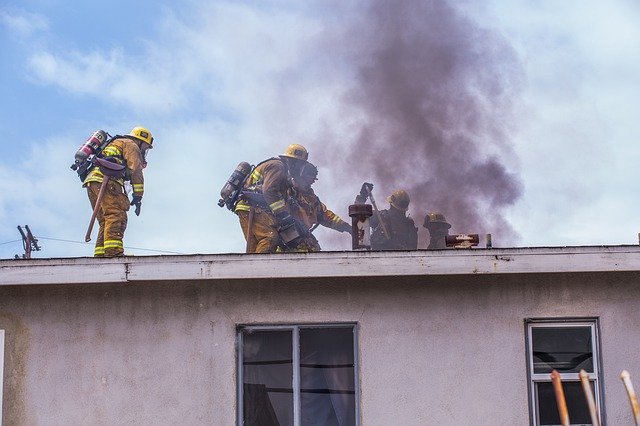Everything You Need to Know About Fire Suppression
Image by Milan LA from Pixabay
Fire suppression systems are designed to automatically or manually trigger in response to an emerging fire, potentially eliminating the fire, or at least minimizing its spread. But how exactly do these systems work? And is it worth installing one in your home or business?
How Fire Suppression Systems Work
Let’s start with the basics of how fire suppression systems work. The goal of any fire suppression is some combination of the following:
- Minimizing damage. Fire is rampantly destructive. If left unabated, it could easily destroy any building and almost everything in it. It can also hurt, or even kill people with its high temperatures and suffocating clouds of smoke. Fire suppression will almost always reduce the damage a fire can do.
- Reducing spread. Suppression may also be able to reduce the spread of an active fire, even if it can’t be extinguished totally. This can keep areas of your building safe for evacuation and serve to keep the fire under control.
- Improving safety during evacuation. Your main priority in a dangerous fire should be getting everyone out safely. A good fire suppression system will allow all occupants to move out of the building quicker, more efficiently, and at reduced risk of physical harm.
Fire suppression systems are typically installed in ceilings around areas of a building that are prone to fire risk. They include an automatic triggering mechanism that will deploy a suppression agent if the presence of smoke and/or fire are detected. If the threshold is reached, the fire suppression system activates, and a blanket of gas, a chemical formula, or foam will cover the area, extinguishing the fire or reducing its ability to spread.
Note that fire suppression systems are different than fire sprinklers. Fire sprinklers, too, are installed in the ceiling and may be triggered automatically (usually with a temperature-sensitive deployment mechanism), but they rely exclusively on water to extinguish flames, and are therefore not suited to all types of fires.
Advantages of Fire Suppression
Fire suppression systems have several advantages over other forms of fire mitigation.
- Immediate, automatic effects. You don’t need to break glass or pull out a hidden fire extinguisher when a fire breaks out. Instead, your fire suppression system will activate instantly and automatically, maximizing the potential to reduce damage and harm.
- Fire class agnosticism. Most modern fire suppression systems are class-agnostic, meaning they’re effective for a wide range of fires, regardless of how they started or which combustible materials they include.
- Near-total coverage. If you have a fire suppression system installed throughout your home or business, you can rest assured that you’ll have near-total coverage; you can’t say the same if you only have one or two fire extinguishers available.
- Cost efficiency. Depending on the features you get and the people you hire, a fire suppression system will likely cost a few thousand dollars to a bit more than $10,000. Considering this can save you hundreds of thousands to millions of dollars in damage, it’s a worthwhile investment.
Installation of Fire Suppression
Installing a fire suppression system is usually inexpensive and quick, as long as you hire a professional. Modern fire suppression systems are often wireless, pre-engineered, and totally self-contained; they’re also modular, so you get only the components you need. They won’t interfere with the rest of your home or business and are hardly noticeable.
Maintenance and Servicing
Fire suppression systems also require little to no maintenance. Once or twice a year, it’s a good idea to have a service technician inspect the system to ensure it’s in operating condition; a pressure valve can also tell you if there are any standing issues with the system. Other than that, your fire suppression system should last at least ten years without interference.
Cleanup
If a fire breaks out and your fire suppression system is activated, cleanup can be a hassle. You’ll need to thoroughly clean the affected area, eliminating smoke and fire residue, as well as items damaged beyond repair. The chemical powder deployed by the fire suppression system can typically be vacuumed up easily and safely.
Is Fire Suppression Enough?
Fire suppression systems are incredibly helpful, easy to install, easy to maintain, and are cost effective. But are they enough to serve as a full fire mitigation system by themselves?
The short answer is no. In addition to a fire suppression system, it’s important to train your employees and teach your family the importance of fire safety. It’s important to have additional fire extinguishers on hand and it’s essential to have an escape plan in place.
This way, if your fire suppression system fails, or if the fire is beyond the control of your fire suppression system, you’ll still have a good chance of evacuating the building and getting to safety with time to spare.
I’m a single mother of 2 living in Utah writing about startups, business, marketing, entrepreneurship, and health. I also write for Inc, Score, Manta, and Newsblaze

